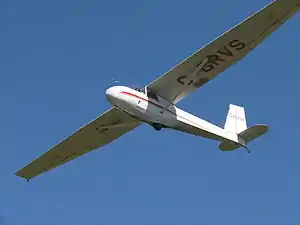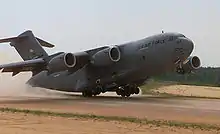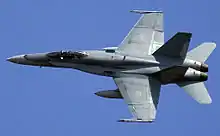Class rating
In aviation, a class rating is an allowance to fly a certain group of aircraft that require training common to all aircraft within the group. A type rating is specified if a particular aircraft requires additional specialized training beyond the scope of initial license and aircraft class training. What aircraft require a type rating is decided by the local aviation authority. Almost all single engine piston (SEP) or multi engine piston (MEP) single pilot aircraft can be flown without a type rating, but are covered by a class rating instead.

An example of a single engine land class aircraft, the ubiquitous Cessna 172
There are seven categories of aircraft, which may be further subdivided into two or more classes:
- airplane category
- single-engine land class
- multi-engine land class
- single-engine sea class
- multi-engine sea class
- rotorcraft category
- helicopter class
- gyroplane class
- powered lift category
- glider category
- lighter than air category
- powered parachute category
- powered parachute land class
- powered parachute sea class
- weight-shift-control aircraft category
- weight-shift-control aircraft land class
- weight-shift-control aircraft sea class
Gallery
 A Mars water bomber, one of the largest multi-engine sea-class aircraft
A Mars water bomber, one of the largest multi-engine sea-class aircraft An airship class aircraft in the aerostat category, a Zeppelin NT
An airship class aircraft in the aerostat category, a Zeppelin NT An example of a glider class aircraft, a Schweizer SGS 2-33
An example of a glider class aircraft, a Schweizer SGS 2-33 An example of a rotorcraft class aircraft, a CH-149 Cormorant helicopter
An example of a rotorcraft class aircraft, a CH-149 Cormorant helicopter An example of a very large multi-engine class aircraft, a C-17 Globemaster III
An example of a very large multi-engine class aircraft, a C-17 Globemaster III An example of a jet fighter aircraft, a CF-18 Hornet
An example of a jet fighter aircraft, a CF-18 Hornet
Notes
References
This article is issued from Wikipedia. The text is licensed under Creative Commons - Attribution - Sharealike. Additional terms may apply for the media files.